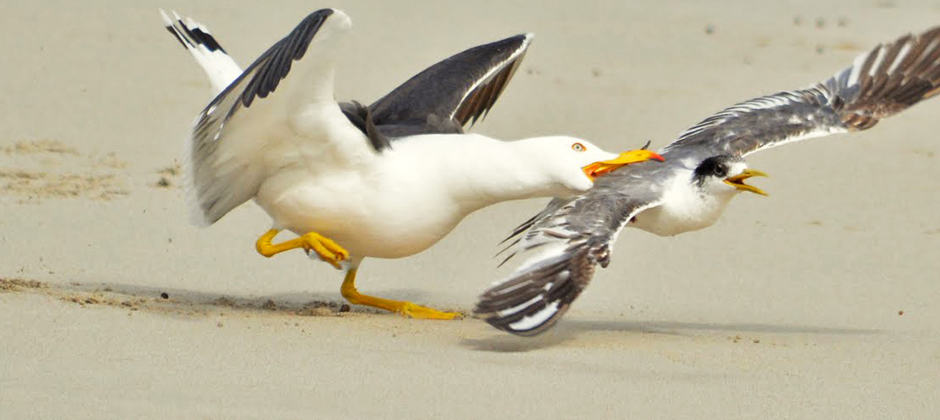Share this article
Innovative foraging helps birds avoid extinction
Barbados bullfinches (Loxigilla barbadensis) steal sugar packets off café tables. Carrion crows (Corvus corone) use cars to crack nuts or seashells. Green herons (Butorides virescens) use bread or insects as bait to catch fish. These are only a few of the ways people have witnessed birds changing their foraging behaviors to adapt to new environments over the years.
Curious about incidents like these, a team of researchers studied if bird species that exhibit these types of behaviors are less likely to become extinct. It turns out, they are.
“The ones that are innovative have a lower risk of extinction,” said Simon Ducatez, a postdoctoral researcher at McGill University and the public research center CREAF Barcelona, who was lead author of the study published in Nature Ecology and Evolution.
Studying cognitive behaviors in birds is complex, Ducatez said. It’s not as simple as measuring IQ in humans. “You can’t ask questions to animals,” he said. And problem-solving projects don’t always work, especially to compare one species to another. “How can you compare a sparrow with, say, a heron or something with very different physical capabilities?” he said.
Ducatez and his colleagues tapped into a database created by Louis Lefebvre, the study’s senior author. Lefebvre sifted through ornithological journals from 1960 to 2018 looking for birds around the world that exhibited new behaviors. “Foraging changes were most likely to be observed,” Ducatez said.
They looked at about 8,000 bird species and came up with about 3,800 novel behaviors, then determined their risk of extinction based on the International Union for Conservation of Nature Red List.
“This whole study has only been possible thanks to birdwatchers and ornithologists publishing their observations,” Ducatez said. “The other side is, we have an amazing dataset regularly updated by the IUCN, which is the best tool we have now to assess the status of birds and animals in general.”
The researchers found a reduced extinction risk when species exhibited innovative behaviors, known as behavioral plasticity. As the number of these behaviors increased in a species, their extinction risk was reduced even further. The opposite was also true. Species that didn’t display these types of behaviors were more at risk of extinction.
The team looked for other variables that might explain the results, and but they found that innovation consistently explained the changes in extinction risk even after taking these variables into account. “Despite potential confounding variables and effects, the results are significant,” Ducatez said.
The study suggests this sort of behavioral plasticity may be one more factor for biologists to consider when assessing a species’ risk of extinction.
“One thing maybe we can get out of this is which species are likely to be more sensitive, to help preserve them,” he said.
Header Image: A Pacific gull (Larus pacificus) attempts to prey on a greater crested tern (Thalasseus begii) on Kangaroo island, South Australia, an unusual behavior for this species. ©Simon Ducatez








